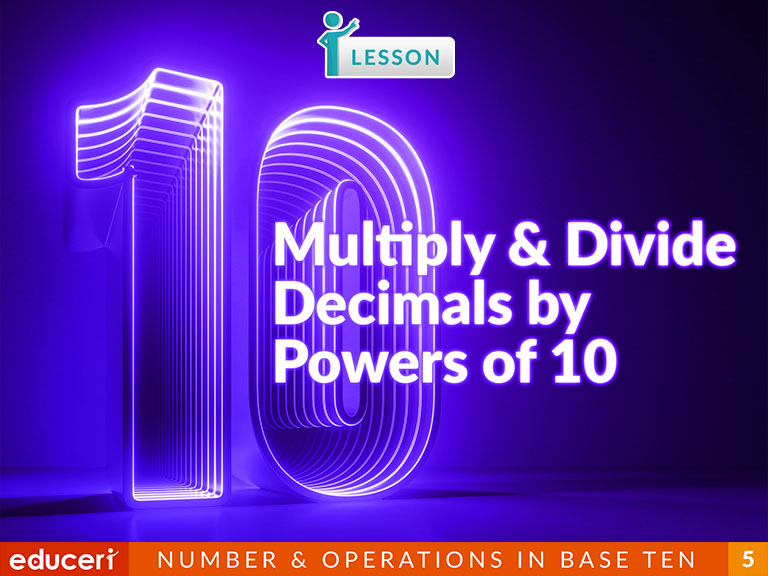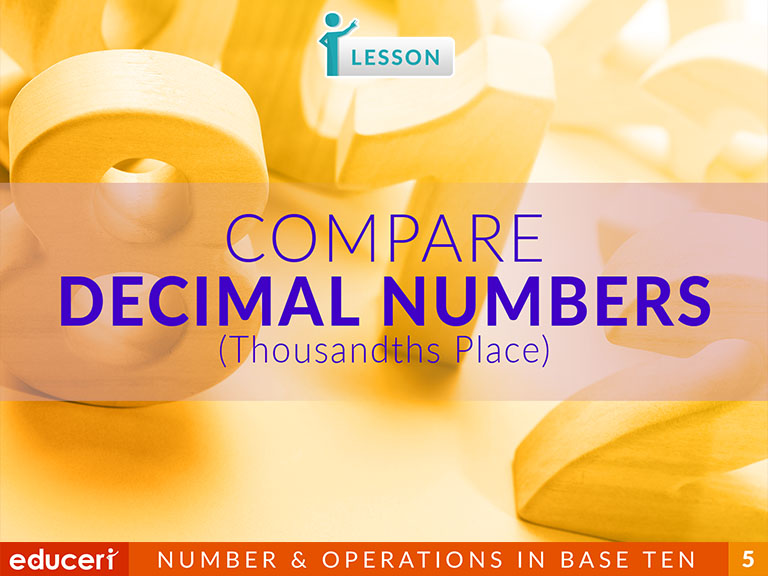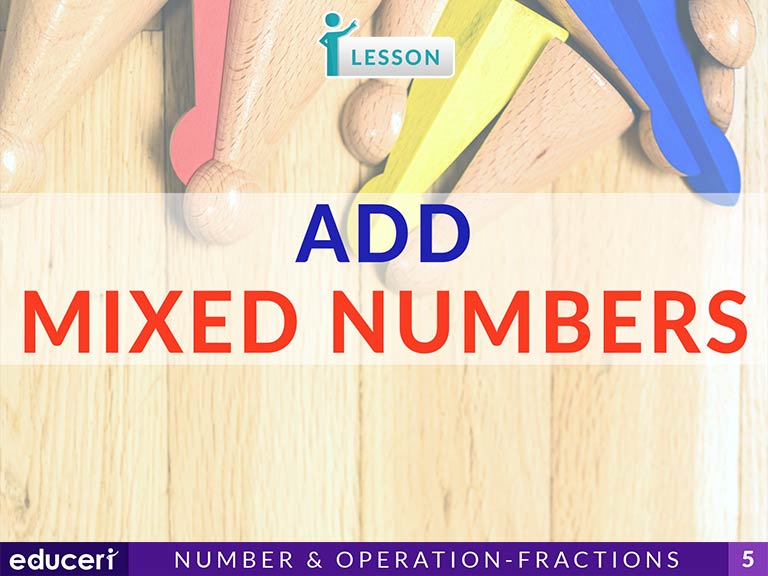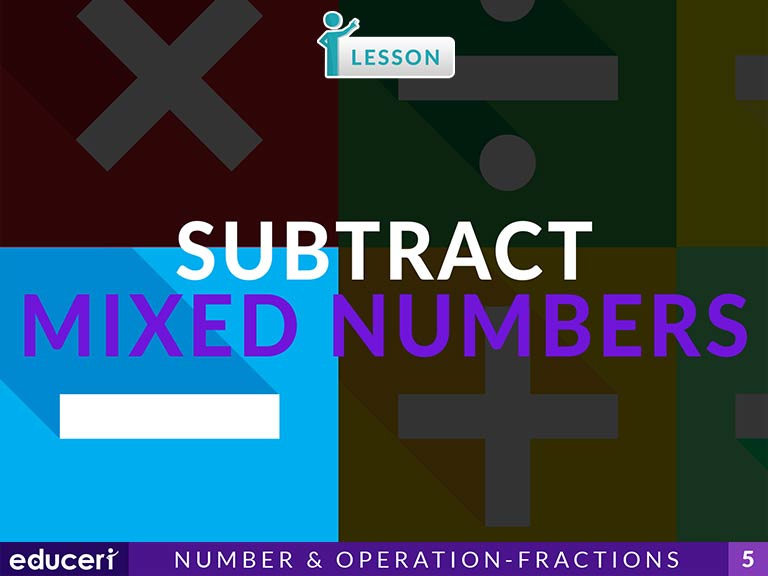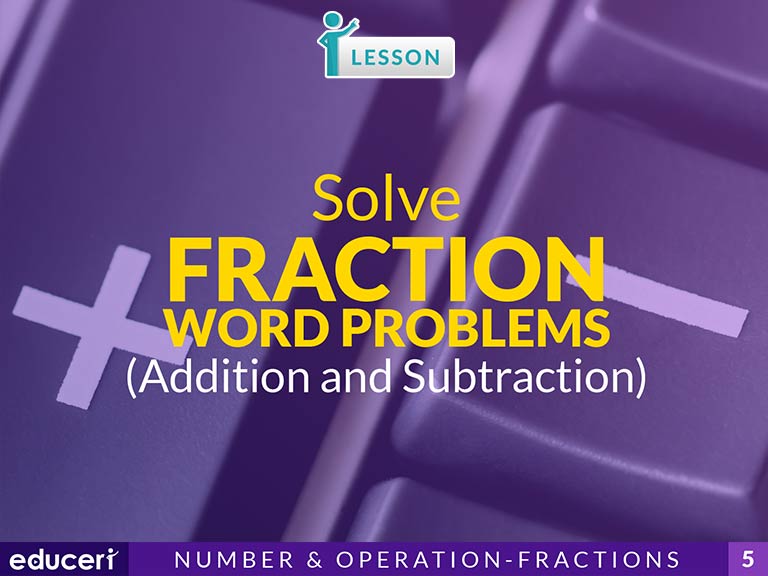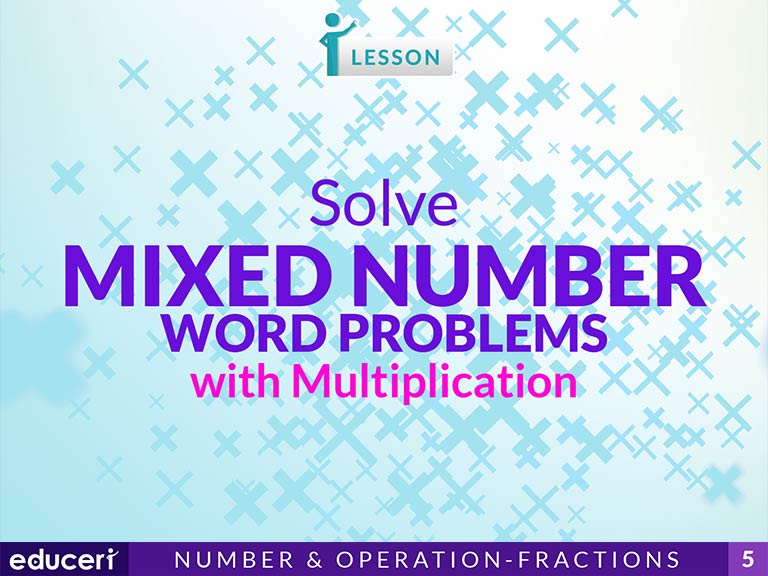All Lessons

Subtract Fractions with Unlike Denominators
This number and operations--fractions lesson teaches students how to subtract fractions with unlike denominators. The lesson includes research-based strategies and strategic questions that prepare students for assessments. In this lesson, students create equivalent fractions to subtract fractions with unlike denominators. Reducing the results is not addressed. This lesson focuses on unlike denominators that require both fractions to be changed.
Share This Lesson
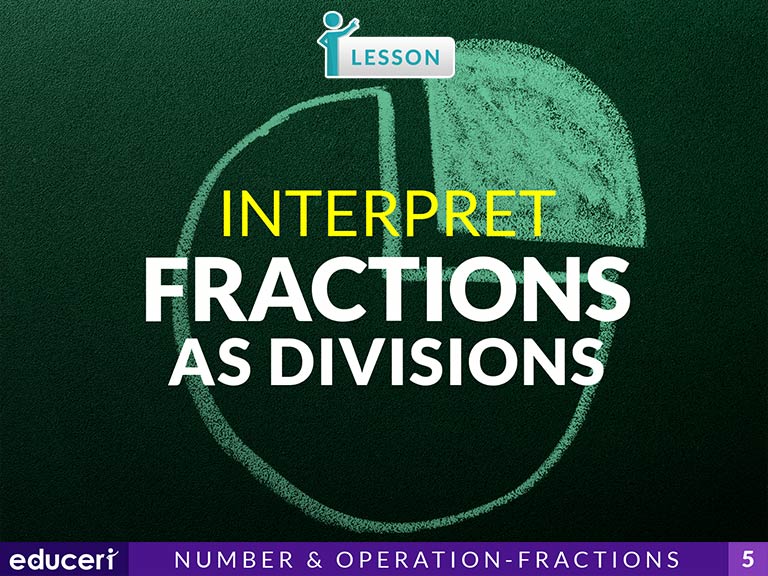
Interpret Fractions as Divisions
This number sense lesson focuses on showing common decimal numbers as percents. The lesson includes research-based strategies and strategic questions that prepare students for assessments. In this lesson, students read the question and change the decimal number into a fraction with a denominator of 100 using a place value chart. Then, they change the fraction into a percent and interpret the result. In addition to the lesson, there are four pages of Independent Practice and Periodic Reviews with questions modeled after current adaptive testing items.
Share This Lesson
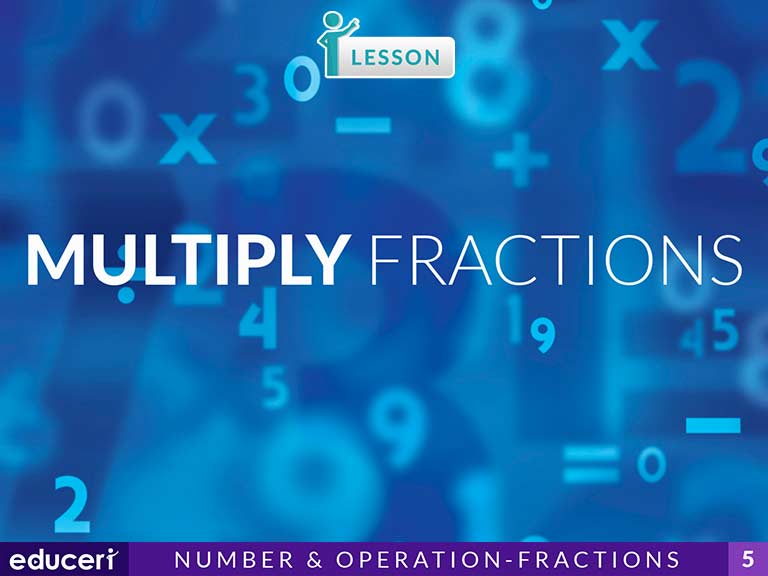
Multiply Fractions
5.NF.4 Apply and extend previous understandings of multiplication to multiply a fraction or whole number by a fraction.
5.NF.4.A5.NF.4.A Interpret the product (a/b) × q as a parts of a partition of q into b equal parts; equivalently, as the result of a sequence of operations a × q ÷ b. For example, use a visual fraction model to show (2/3) × 4 = 8/3, and create a story context for this equation. Do the same with (2/3) × (4/5) = 8/15. (In general, (a/b) × (c/d) = (ac)/(bd).
This lesson addresses fraction multiplication at the fluency level.
Share This Lesson
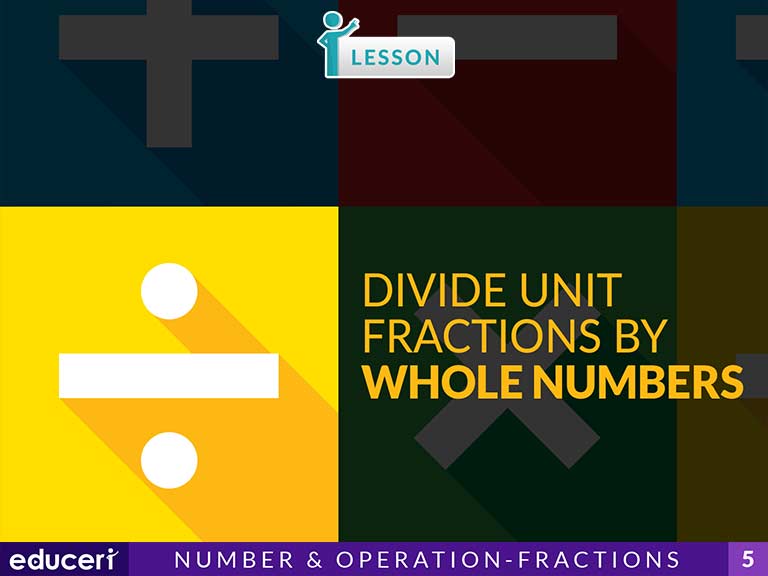
Divide Unit Fractions by Whole Numbers
(J) Represent division of a unit fraction by a whole number and the division of a whole number by a unit fraction such as 1/3 ÷ 7 and 7 ÷ 1/3 using objects and pictorial models, including area models
5.3.L(L) Divide whole numbers by unit fractions and unit fractions by whole numbers.
5.NF.7 Apply and extend previous understandings of division to divide unit fractions by whole numbers and whole numbers by unit fractions.
5.NF.7.A5.NF.7.A Interpret division of a unit fraction by a non-zero whole number, and compute such quotients. For example, create a story context for (1/3) ÷ 4, and use a visual fraction model to show the quotient. Use the relationship between multiplication and division to explain that (1/3) ÷ 4 = 1/12 because (1/12) × 4 = 1/3.
This lesson focuses on the fluency of dividing a unit fraction by a whole number. Although the purpose of the lesson is to teach the process, there are opportunities for students to conceptually examine, read, and write about the structure of a unit fraction being divided by a whole number.
Share This Lesson
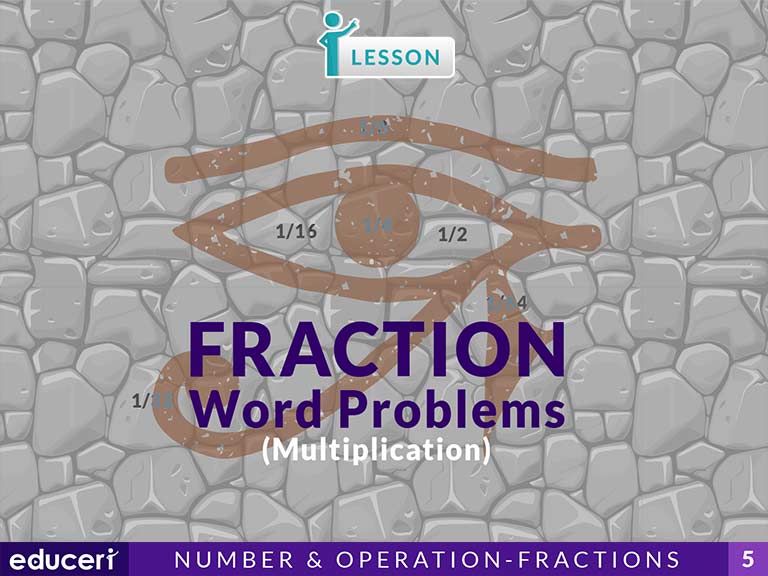
Fraction Word Problems: Multiplication
This fractions word problems lesson covers the meaning of fraction multiplication. The lesson includes research-based strategies and strategic questions that prepare students for common assessments and performance tasks. In this lesson, students will read multiplication word problems and draw models to understand what it means to find a fraction of a fraction.
Share This Lesson
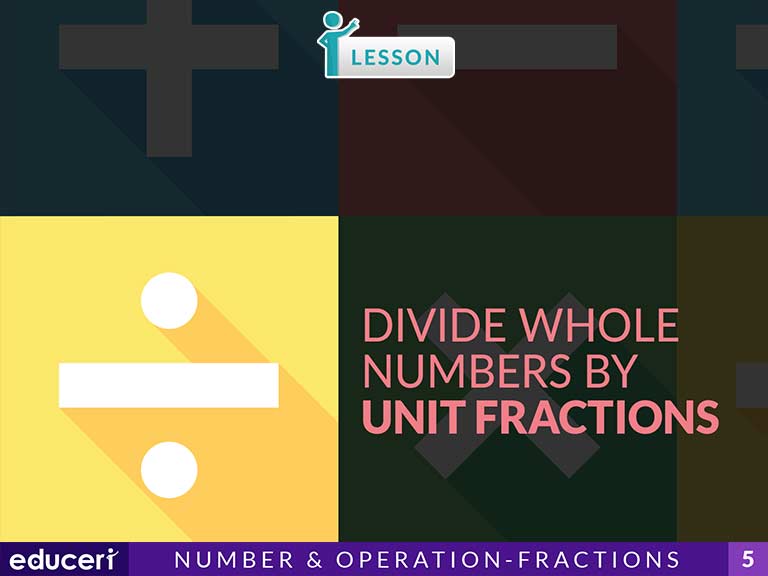
Divide Whole Numbers by Unit Fractions
(J) Represent division of a unit fraction by a whole number and the division of a whole number by a unit fraction such as 1/3 ÷ 7 and 7 ÷ 1/3 using objects and pictorial models, including area models
5.3.L(L) Divide whole numbers by unit fractions and unit fractions by whole numbers.
5.NF.7 Apply and extend previous understandings of division to divide unit fractions by whole numbers and whole numbers by unit fractions.
5.NF.7.B5.NF.7.B Interpret division of a whole number by a unit fraction, and compute such quotients. For example, create a story context for 4 ÷ (1/5), and use a visual fraction model to show the quotient. Use the relationship between multiplication and division to explain that 4 ÷ (1/5) = 20 because 20 × (1/5) = 4.
Share This Lesson
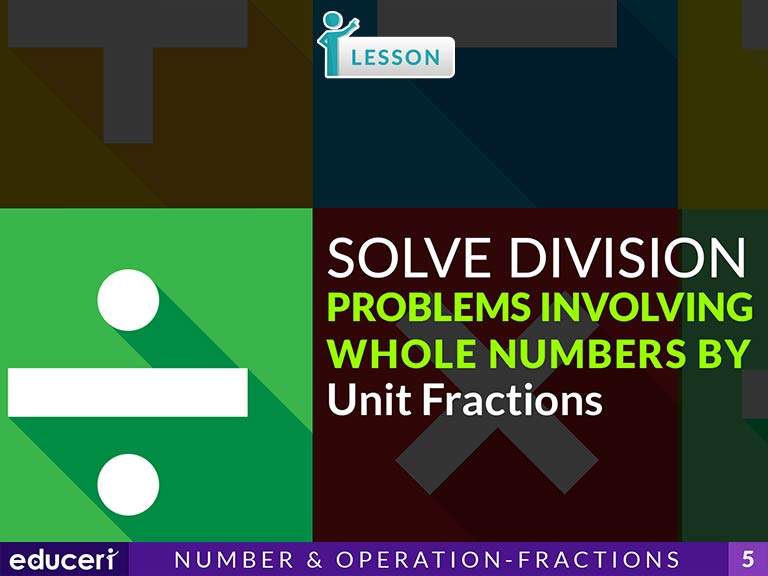
Solve Division Problems Involving Whole Numbers by Unit Fractions
(J) Represent division of a unit fraction by a whole number and the division of a whole number by a unit fraction such as 1/3 ÷ 7 and 7 ÷ 1/3 using objects and pictorial models, including area models
5.3.L(L) Divide whole numbers by unit fractions and unit fractions by whole numbers.
Share This Lesson

Solve Multi-Step Word Problems Involving Measurement
(B) Convert measurements within the same measurement system, customary or metric, from a smaller unit into a larger unit or a larger unit into a smaller unit when given other equivalent measures represented in a table
4.8.C(C) Solve problems that deal with measurements of length, intervals of time, liquid volumes, mass, and money using addition, subtraction, multiplication, or division as appropriate.

